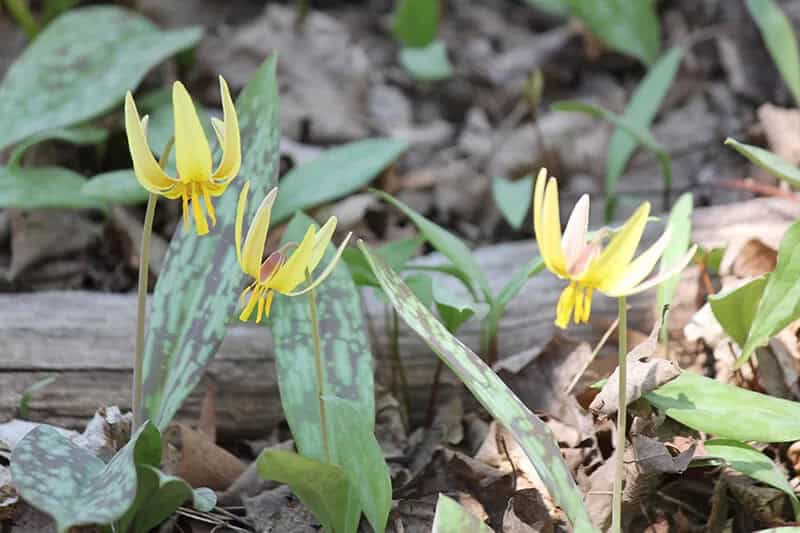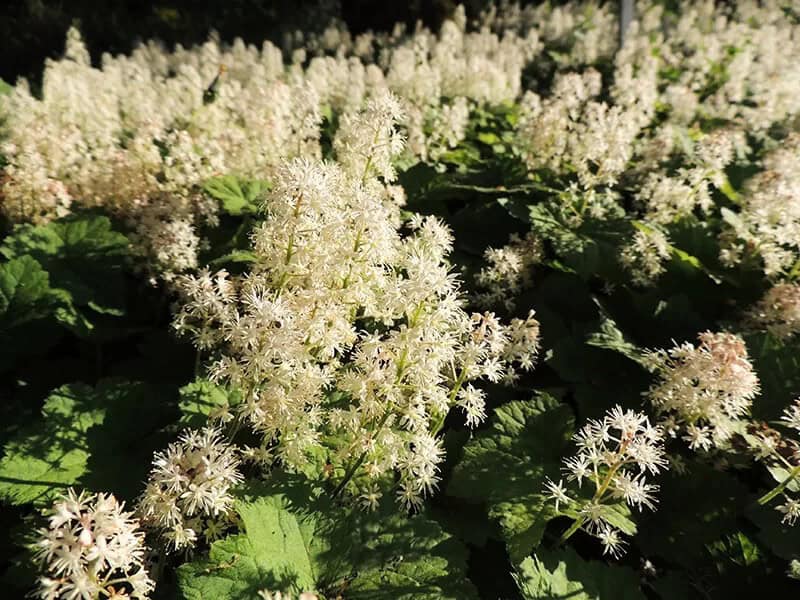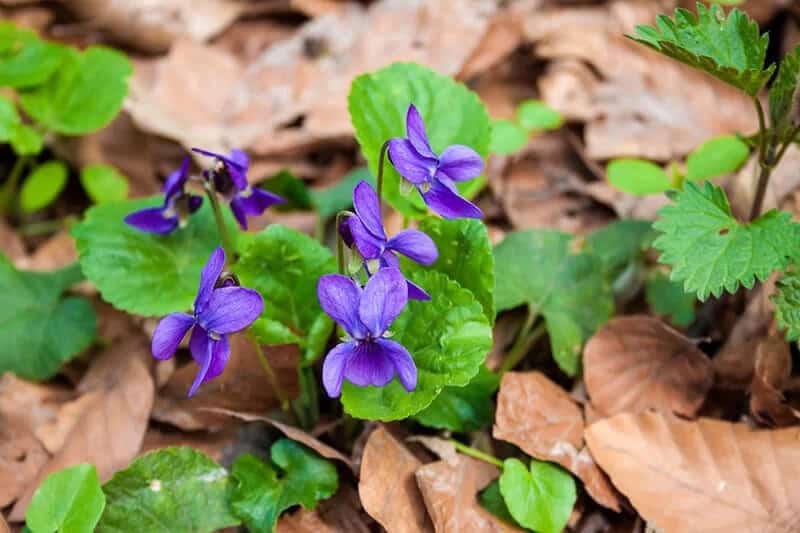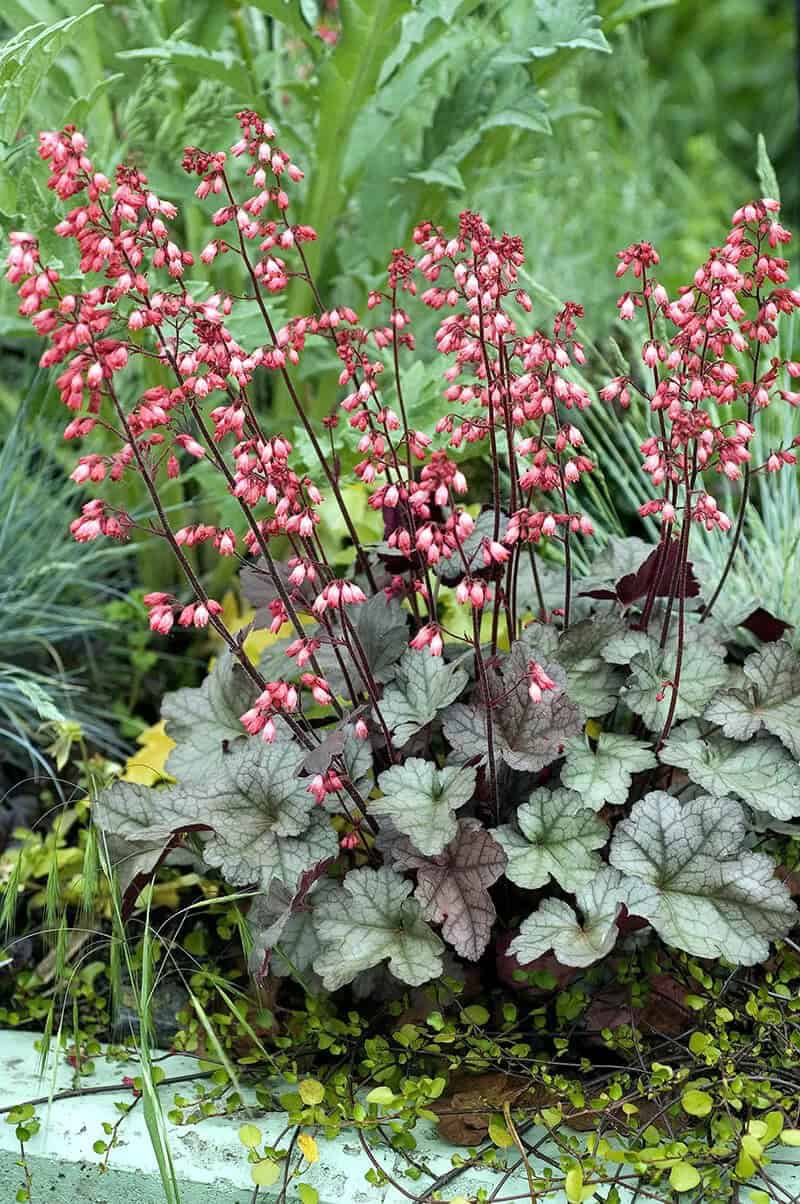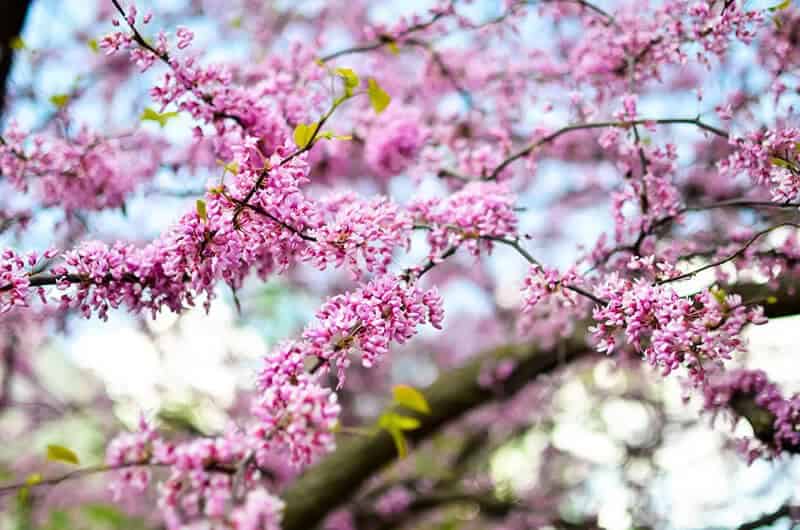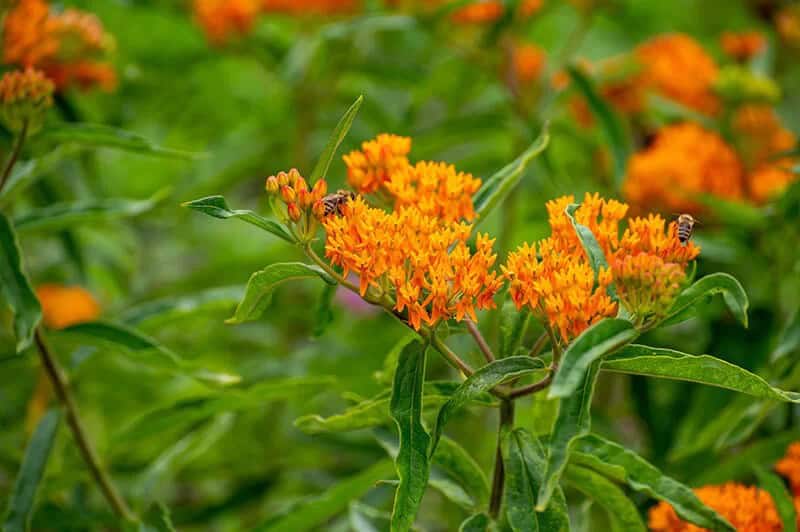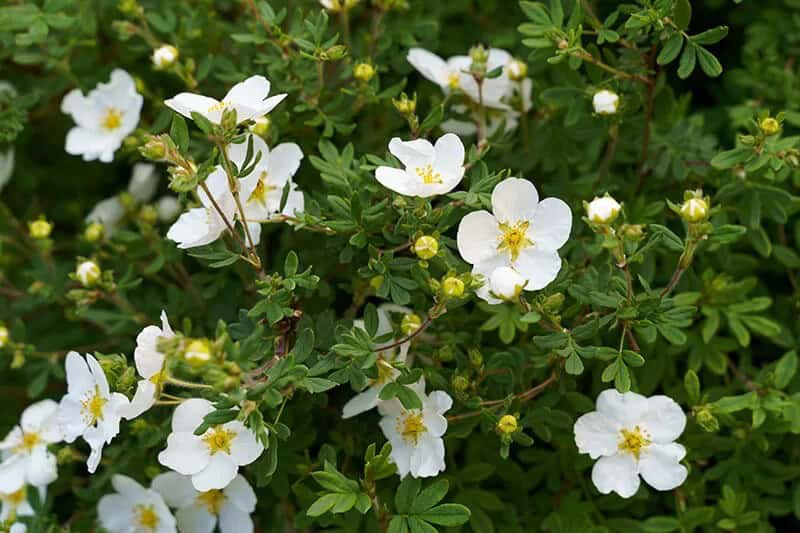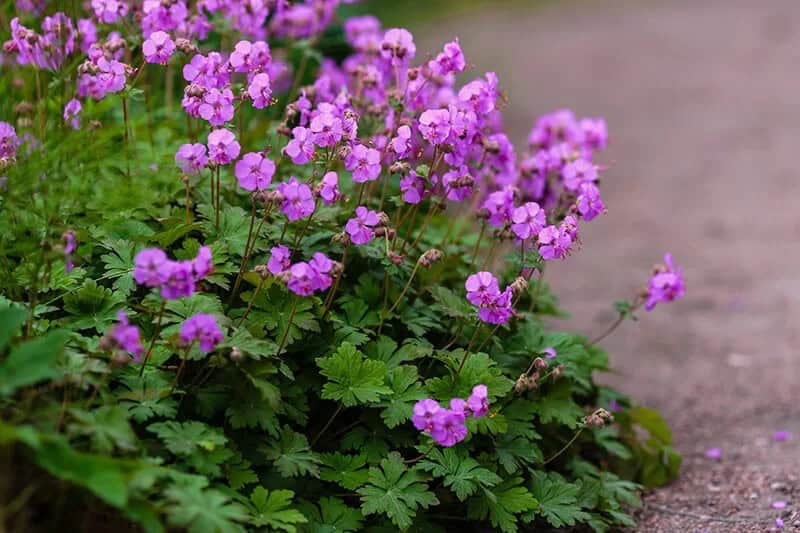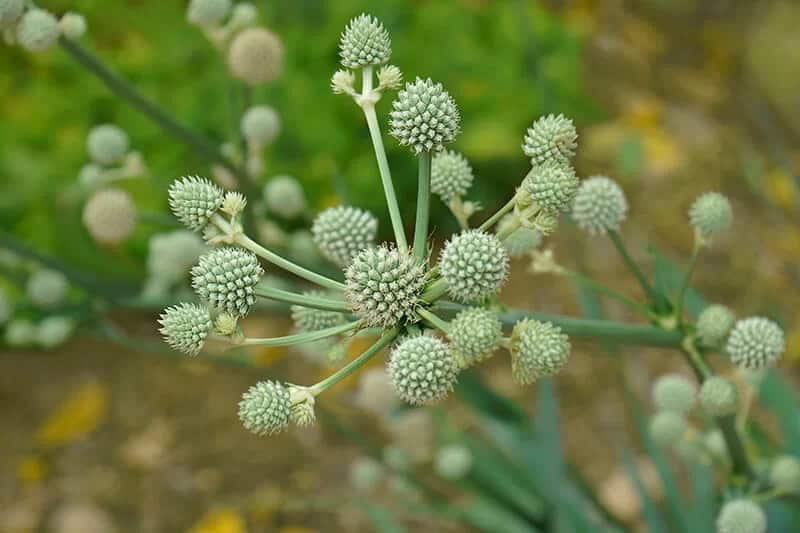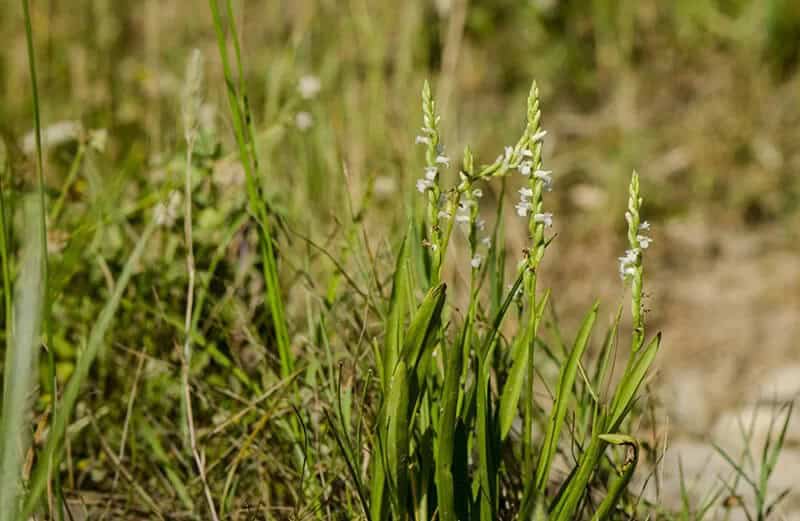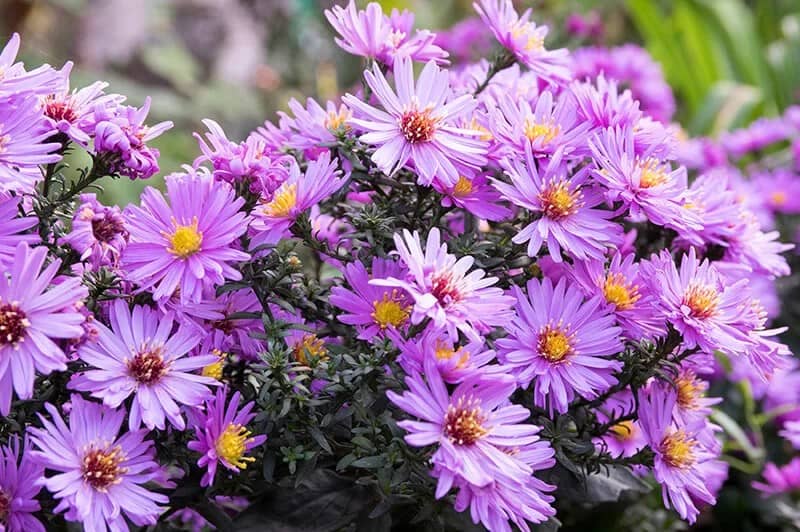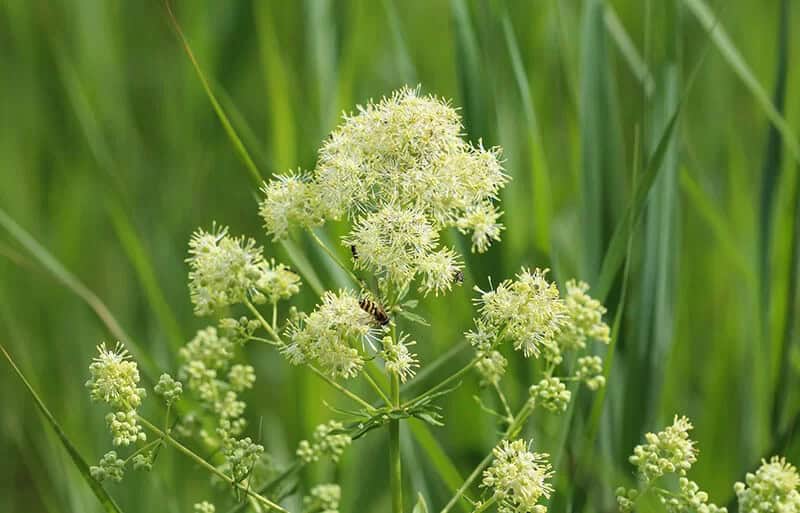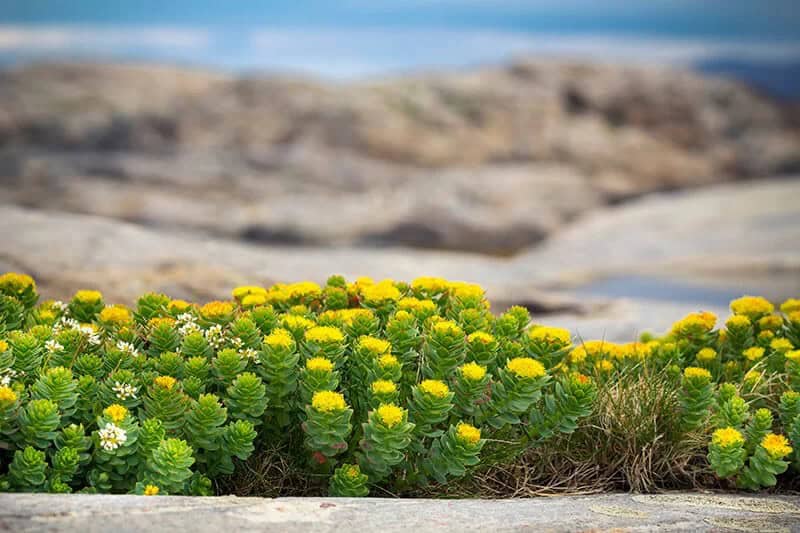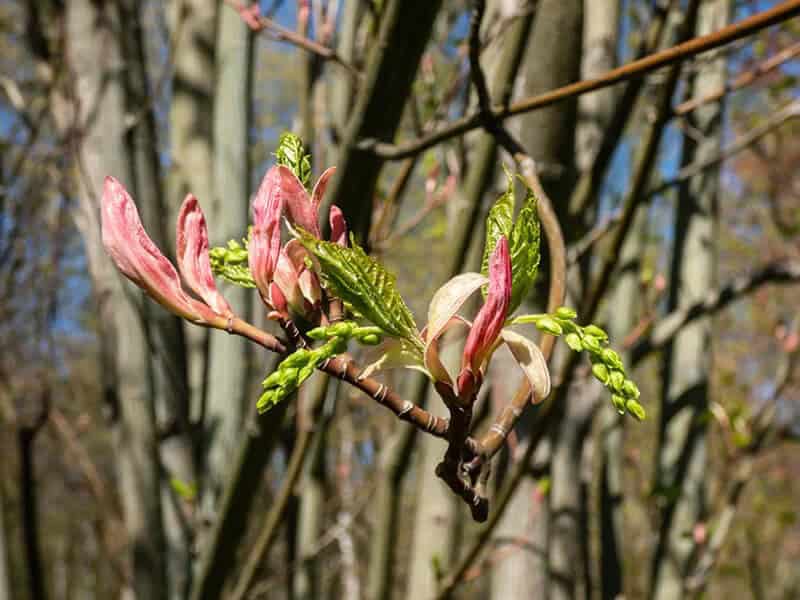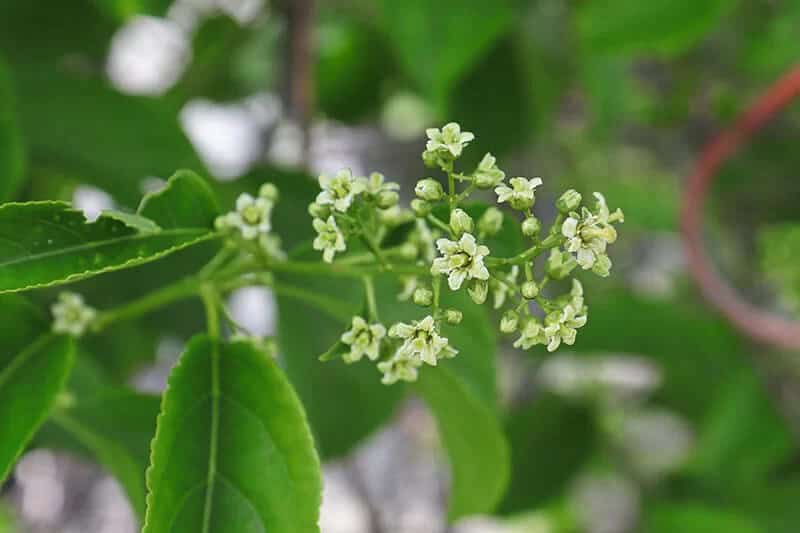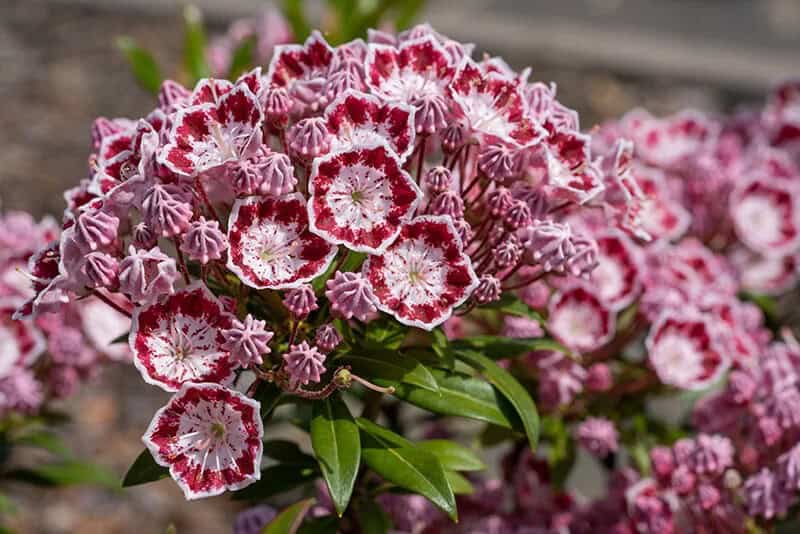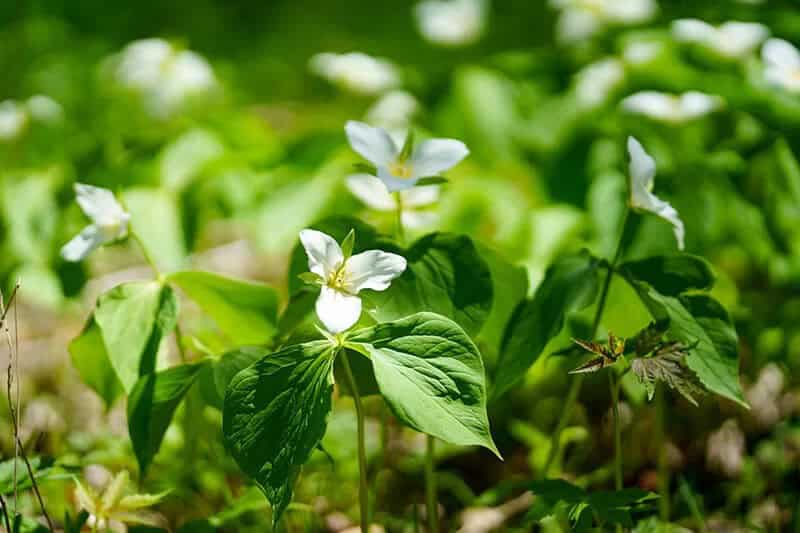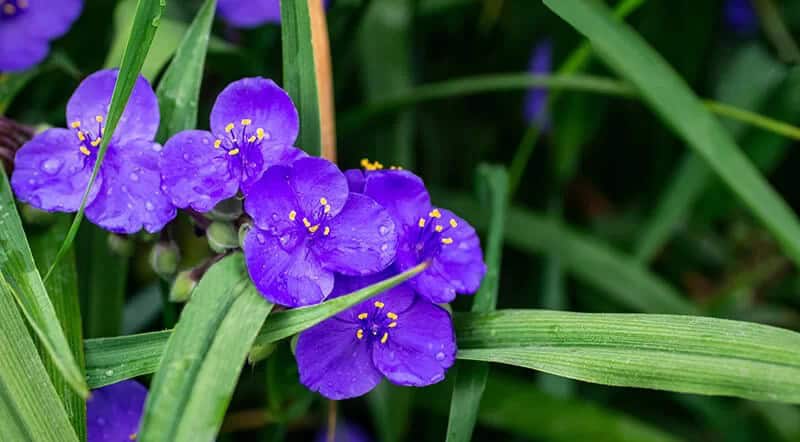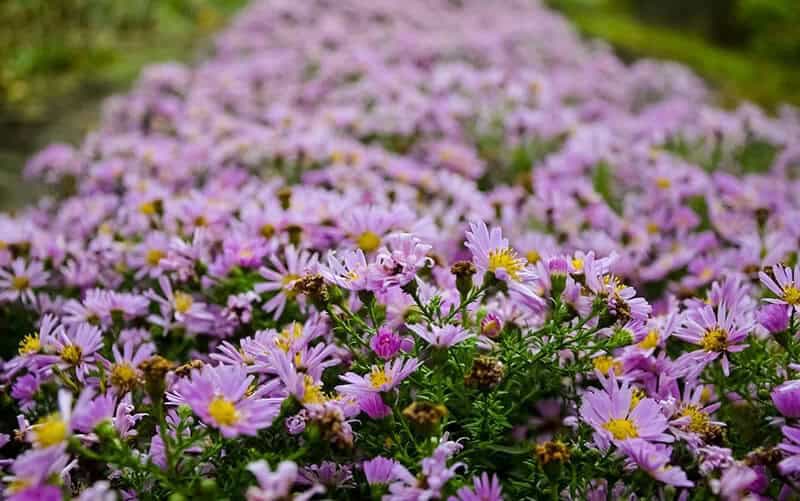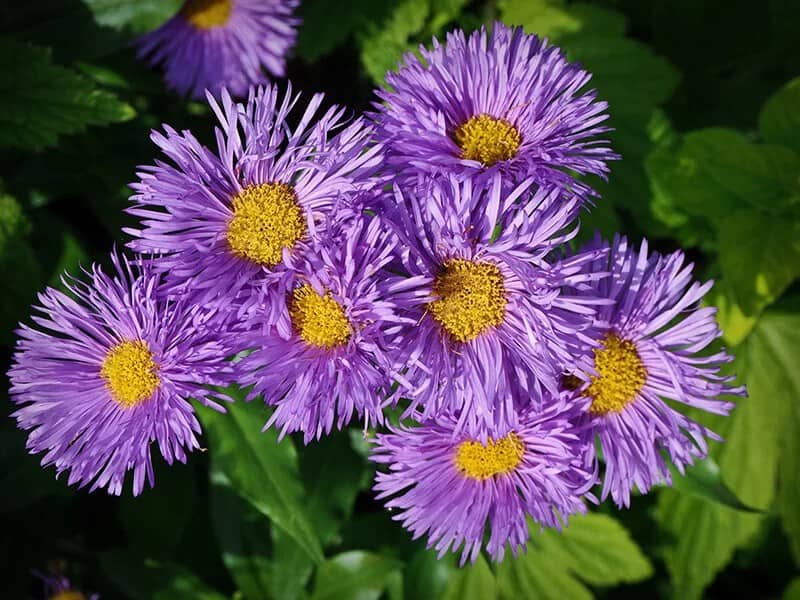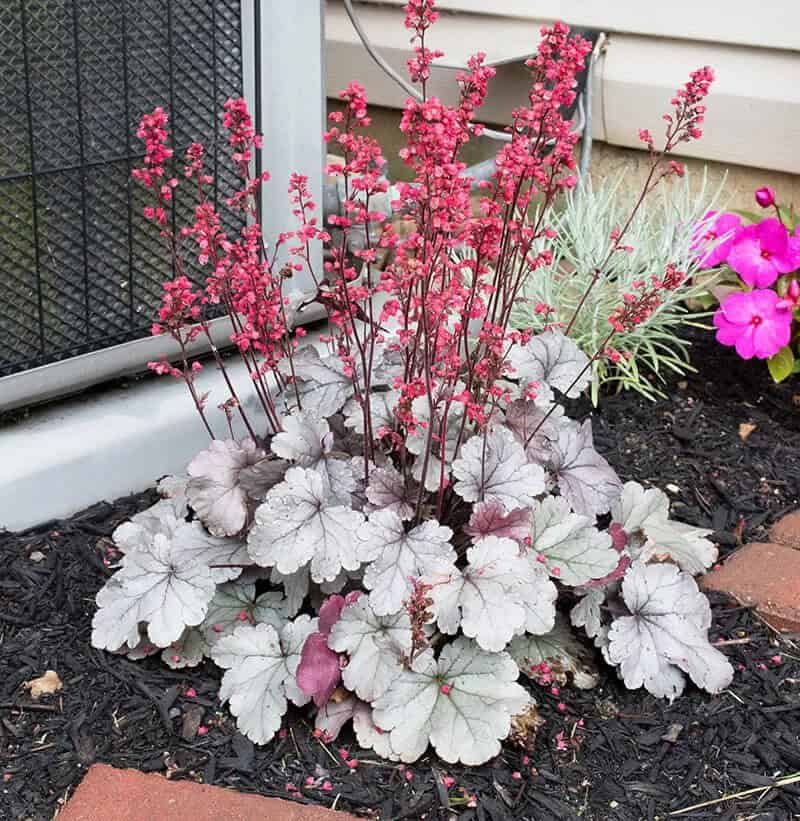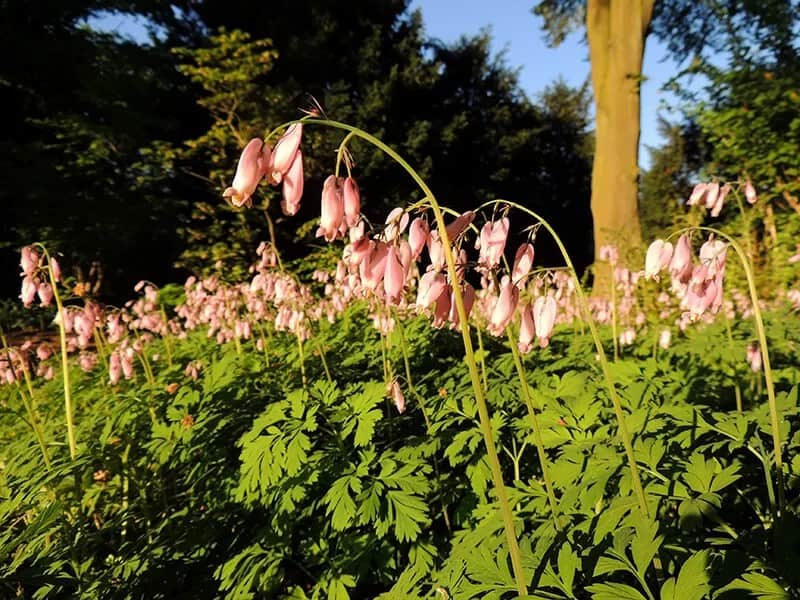As the last wisps of winter’s chill dissipate, spring awakens with a gentle warmth. With the frost thawing, the natural world stirs from its prolonged slumber, as if collectively exhaling a collective sigh of relief. The increasing daylight and rising temperatures signal the return of life, as the earthy scent of blooming flora and fauna fills the air.
27 Best Spring Flowers to Have in your Garden
As spring unfolds its vibrant colors, there’s no better excuse to bring a touch of nature indoors. Incorporating the most stunning spring flowers into your home decor is not only a treat for the eyes, but also a thoughtful way to cultivate a sense of calm and serenity. Not only will these blooms add a pop of color to your space, but they’ll also provide a soothing balm for a stressful day.
Yellow Trout Lily (Erythronium Americanum)
The Erythronium americanum, or trout lily, is a stunning flowering plant native to forests and woodlands. Its most striking feature is the solitary, nodding bell-shaped flower adorned with large petals featuring a striped or spotted pattern. This hardy perennial is an excellent choice for gardeners of all levels, as it’s effortless to cultivate, propagate quickly, and can thrive from seeds or cuttings.
In fact, one of the greatest joys of growing trout lily is its ability to bloom year-round in suitable conditions, making it a perfect addition to any garden. With its good luck symbolism, moist water needs, fertile soil requirements, and tolerance for full sun to partial shade, this plant is sure to bring a touch of springtime beauty to your outdoor space every season from April to June.
Harbinger of Spring (Erigenia Bulbosa)
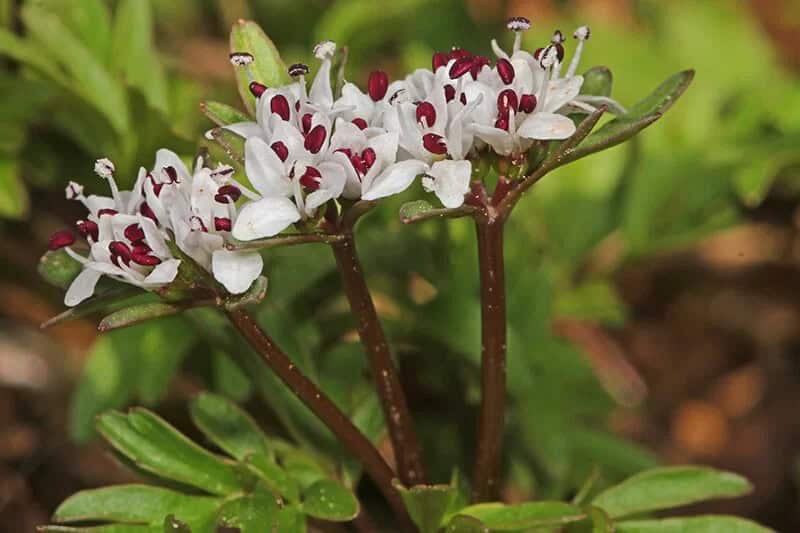
The Erigenia bulbosa, also known as Harbinger of Spring, is a symbol of good fortune and well-being. This beautiful plant requires moisture to thrive, with an ideal soil condition that’s both fertile and average. Its growing zones range from 5 to 7, making it suitable for many regions. To get the best out of this plant, provide part shade and enjoy its blooming season from March to May.
One of the unique features of Erigenia bulbosa is its decorative flowers that grow tall in clusters, coming in a variety of colors. This makes them a popular choice for adding visual interest to any garden or pot. Moreover, they have an easy-going personality and are relatively carefree, making them perfect for beginners.
If you’re new to planting, Erigenia bulbosa is an excellent option to start with.
Its low-maintenance nature means you can focus on other aspects of gardening while still enjoying the beauty it brings.
Heart-Leaf Foam Flower (Tiarella Cordifolia)
The heart-leaf foam flower’s unique charm lies not only in its delicate appearance but also in its symbolism of good luck. This charming bloom thrives in moist environments with fertile soil that’s free from pollutants, making it a perfect choice for gardeners seeking a low-maintenance yet striking addition to their outdoor spaces. As a versatile and adaptable plant, the heart-leaf foam flower can be grown in zones 3 to 8, tolerating partial sun to light shade conditions.
Its blooming season typically falls between May and June, filling the air with vibrant colors and adding a touch of whimsy to your garden. What’s more, this foam-flowered beauty won’t hog all the attention by taking up too much space. Instead, it’ll happily coexist in containers or directly in the soil, growing effortlessly and creating a colorful oasis that will delight both you and your visitors.
Wood Violet (Viola Pedata)
The wood violet, a perennial that can reach up to six feet in height, boasts a captivating array of shapes, colors, and sizes. Its fragrant flowers grow in clusters, with some varieties featuring deep purple petals and others showcasing light blue hues. This stunning spring bloom is an inspiration for gardeners seeking to create vibrant and fresh landscapes.
Spring Beauty (Claytonia Virginica)
Claytonia virginica, a vibrant herbaceous wildflower, boasts an array of captivating characteristics that make it a gardener’s delight. Its fragrant blooms are not only visually stunning but also draw in a variety of pollinators, including bees, butterflies, and birds. A low-maintenance gem, this spring-flowering beauty thrives in a range of conditions, requiring average water levels, fertile to average soil, and tolerating partial shade to dappled sunlight.
With blooming seasons spanning from February to May, Claytonia virginica is a versatile addition to any garden, offering effortless care and the promise of good luck, health, and love. Its growing zones range from 4 to 9, making it an accessible choice for gardeners across various regions.
Alumroot (Heuchera Americana)
The humble Alumroot (Heuchera sanguinea) boasts a rich symbolism tied to grief and emotional healing. Its unique characteristics also make it an attractive addition to any garden. As you gaze upon its dainty, bell-shaped flowers, remember that this plant thrives in moist environments with partial shade. It’s no surprise then, that Alumroot is often found growing in zones 4 to 9.
While it may not be the most showy of blooms, its delicate beauty makes up for it during its brief but lovely March to May flowering period. But Alumroot’s significance goes beyond mere aesthetics – its historical use in traditional medicine and textile dyeing speaks to a deeper connection to our collective cultural heritage. This adaptable, low-growing evergreen is perfect for those looking to add some subtle charm to their garden.
And as a bonus, it attracts birds and butterflies, making it a lovely addition to any outdoor space.
Redbud (Cercis Canadensis)
The redbud tree, a part of the Cercis genus, has been prized for its medicinal properties for centuries. One of its most striking features is its vibrant display of red blossoms that grow in clusters at the top of its branches during the spring season. With its full sun to partial shade requirements and average soil fertility, this resilient tree thrives in USDA growing zones 4-9.
Its remarkable adaptability allows it to flourish in a variety of environments, from forests to meadows and fields, making it a delightful sight for anyone lucky enough to spot one. Despite its delicate appearance, the redbud is surprisingly robust, earning it the nickname ‘flowering dogwood’ due to the shape of its showy red blooms.
Butterfly Weed (Asclepias Tuberosa)
The Butterfly Weed, with its striking beauty, holds symbolic significance for remembrance, dignity, and freedom. As an attractive addition to ornamental gardens, this exotic-looking spring flower thrives in rich soil, requiring moisture to grow. Its growth is limited to zones 3-9, where it basks in bright sunlight. The blooming season typically spans from April to May, with clusters of upward-growing flowers that attract not only butterflies but also bees.
The fragrance emitted by the stems plays a crucial role in attracting these pollinators. Despite its small blooms being easily overlooked, this fantastic addition to your garden offers a unique charm.
Bloodroot (Sanguinaria Canadensis)
Bloodroot, a perennial with a rich history of medicinal and ornamental uses, is a unique type of spring flower that attracts a variety of pollinators, including butterflies, bees, and hummingbirds. Its vibrant blooms are not only visually striking but also possess natural dye properties, making it a valuable addition to any garden.
Originally used for its medicinal properties, Bloodroot has evolved into a popular choice for ornamental gardens due to its ease of growth and low maintenance requirements. With its ability to thrive in a range of conditions, including part shade to full shade, and soil types from fertile to average, this charming flower is perfect for gardeners of all skill levels.
A small but mighty addition to any springtime display, Bloodroot’s delicate petals and potential to help alleviate respiratory issues make it a truly special plant.
Wild Geranium (Geranium Macrorrhizum)
The lotus of the woods, a symbol of peace and unity, thrives in average water conditions with fertile or average soil, growing zones 3-8, full sun, and blooming from March to May. This cold-hardy perennial is deeply rooted and well-established, making it an attractive addition to any garden. Its soft, touchable blooms are a unique feature that adds visual interest.
Historically, Native Americans used the lotus of the woods for medicinal purposes, further solidifying its value as a valuable asset in your outdoor space.
Rattlesnake Master (Eryngium Yuccifolium)
The Cobra Lily (Darlingtonia californica) boasts a unique flower resembling a snake’s head, steeped in the traditional medicine of American Indians. This biennial wildflower thrives in the wilderness. Characteristics include soft, flexible leaves and flowers emitting a deep scent that attracts moths, butterflies, and various other animals. Its symbolism is tied to protection, and it grows well in average soil conditions, tolerating an average amount of water and thriving in full sun.
The blooming season typically spans from May to September, making it suitable for growing zones 4 to 9.
Lady’s Tresses (Spiranthes Cernua)
Lady’s Tresses, a perennial orchid, embodies symbolism of strength, protection, and good luck. This delicate spring flower thrives in moist environments with average soil conditions, growing zones 5 to 9, and partial to full sun exposure. Its blooming season spans from May to September, offering a visual treat for garden enthusiasts. As an attractive plant, Lady’s Tresses attracts birds, butterflies, and bees, allowing you to appreciate its beauty up close.
In traditional medicine, this exotic orchid has been used to promote health. Interestingly, in the 16th century, it was valued more highly than gold, a testament to its cultural significance. Priests and ministers often adorn themselves with Lady’s Tresses due to their sturdy and well-established nature.
New England Aster
The New England Aster (Aster novae-angliae) is a stunning spring-blooming flower that boasts a rich symbolism tied to wealth. This ornamental treasure thrives in environments with average water needs, fertile to average soil conditions, and basks in the warmth of full sun. Its growing zones range from 4 to 8, making it an ideal choice for gardeners in these regions. As its name suggests, the New England Aster is often referred to as ‘Jacob’s Ladder’ due to its peculiar growth habit.
This versatility has led many to harness its medicinal properties, further solidifying its significance. Beyond its aesthetic appeal, this flower plays a vital role in supporting local wildlife by attracting birds and bees throughout its blooming season from May to July. The plant’s soft and flexible leaves offer a subtle contrast to the delicate, yet vibrant flowers that emit a unique scent, drawing in moths, butterflies, and bees.
As an attractive addition to any garden or yard, the New England Aster is sure to captivate with its charm.
Meadow Rue (Thalictrum Dasycarpum)
With its striking appearance and subtle symbolism, the perennial Meadow Rue has been a topic of fascination for many garden enthusiasts. This intriguing flower boasts a glossy texture and sensitive leaves that are prone to cold damage. Its unusual blooms have even earned it a reputation as a dreaded plant among some insect populations. Furthermore, the leaves and stems of the Meadow Rue belong to the poisonous plant family, highlighting the importance of handling this plant with caution.
Despite its potential drawbacks, the Meadow Rue is relatively easy to cultivate and can be used in wild areas to control overgrowth. As a bonus, it requires average soil and sunlight conditions, making it accessible to gardeners of all skill levels. With its blooming season typically occurring from April to May, this perennial flower offers a unique opportunity for gardeners to appreciate its beauty and symbolism during the spring.
Garden Phlox (Phlox paniculata)
The Phlox plant, often referred to as ‘garden phlox’, is a perennial that exudes symbolism of peace, making it an ideal addition to any serene garden setting. It thrives in moist environments with average soil quality and can be grown in USDA zones 4 to 8. This sun-loving plant requires full sunlight to bloom, typically between March and May. As a result, it’s a popular choice for ornamental gardens as it attracts numerous insects and birds, further enhancing its peaceful ambiance.
In addition to its aesthetic appeal, Phlox has been used in traditional medicine to treat various conditions, making it a versatile and valuable addition to any garden.
Meadow Saffron (Rhodiola Rosea)
Saffron, an enigmatic plant with a multitude of applications, holds significance as a symbol of healing and strength. Its unique properties have made it a sought-after commodity across cultures, utilized not only for culinary purposes but also as a medicine and natural dye. The vibrant flowers, boasting a distinctively striking hue, can be strategically placed to attract birds, adding an aesthetic touch to any setting.
As a perennial, saffron typically exhibits a sturdy stem and dark green foliage. Interestingly, seeds may occasionally appear within the blooms, which are known to disperse during the blooming season, typically occurring from April to May. This versatile plant thrives in conditions of full sun to part shade, average soil, and moisture levels that can be classified as moist. Its growing zones range from 4 to 9, making it a feasible option for cultivation in various regions.
Striped Maple (Acer Pensylvanicum)
The majestic maple tree is an integral part of North America’s forest ecosystem. Its affinity for moist environments and average soil conditions has led to its endemic status in the region. As a vital resource, it provides sustenance, medicinal properties, and shelter for local communities. With different varieties producing beans and syrup, this tree’s significance extends beyond its striking appearance.
Measuring up to 20 centimeters in length, its leaves are a notable feature, while the flowers initially white, eventually transition into a deep purple hue.
Bitter Sweet (Celastrus scandens)
The Celastrus scandens plant holds significant importance due to its versatility in providing relief from various health issues. The seeds can be used to create tea that soothes headaches and irritations, while they can also be ground into a flour substitute for baking bread. Additionally, the flowers are utilized as a spice, offering further culinary applications. Furthermore, the plant’s petals have been known to alleviate symptoms associated with asthma and chest ailments.
Beyond its medicinal properties, Celastrus scandens is an attractive flowering shrub that attracts bees and butterflies, making it an ideal addition to landscaping and garden designs. Its ease of cultivation allows for a range of growth styles, from a flowing vine to a bush-like appearance.
Starflower (Cardamine concatenate)
As a symbol of healing, this perennial flower is often overlooked due to its unassuming appearance and lack of edibility. Its sweet fragrance is a pleasant surprise, and the natural color of its blooms makes it a popular choice for floral arrangements. Beyond its aesthetic appeal, the plant has a range of practical uses, from brewing tea to repelling insects. In ancient times, it was even used as a dye. Found in zones 3 to 7, this adaptable flower thrives in average soil and full sun.
Its blooming season typically falls between April and May, although its perennial nature means it can be enjoyed throughout the year. One of the plant’s most significant contributions is its role in maintaining local ecosystems. Attracting insects and birds helps keep vegetation healthy by controlling pests. As a hardy perennial, the plant is resilient to cold temperatures and can be reused without fear of damage.
Mountain Laurel (Kalmia latifolia)
The mountain laurel, a member of the heath family, boasts a unique conical trunk shape when viewed from above, earning it the nickname ‘cone-bush’. This distinctive feature is just one of the many intriguing aspects of this evergreen plant. Its leaves and branches have a soft, hairy texture that is pleasing to the touch. As its name suggests, mountain laurel is often found growing in forests at higher elevations.
Beyond its natural habitat, it has been used as an ornamental flower, food source, and medicine. In terms of care, mountain laurel requires average soil, moderate to partial shade, and moist conditions. It thrives in USDA hardiness zones 5 to 9, blooming from March to May with a display of vibrant colors.
Painted Trillium (Trillium Undulatum)
The Painted Trillium (symbolizing love) thrives in environments characterized by moist conditions, moderate soil quality, and partial to full shade. Its growth zones span from 3 to 7, with a blooming season that typically unfolds between April and May. This perennial produces vibrant flowers in various colors, earning it a reputation for being edible, sought-after, and versatile.
Historically, the plant was used as a natural remedy and has been employed in pottery designs, while its unique shape has led to its use in jewelry-making. As an annual species, each year brings new life, followed by the eventual demise of the plant, allowing it to play a vital role in the ecosystem.
Spiderwort (Tradescantia ohiensis)
This peculiar-looking plant boasts a fuzzy, hairy appearance that sets it apart from others. One of its notable features is the presence of tiny oil glands on its leaves, which have been known to be used for tanning animal skins. This plant also has an unexpected use – controlling insect populations in the garden. However, it’s essential to exercise caution when using it, as it can potentially harm your own plants.
Beyond its practical applications, this versatile plant has been utilized in various ways, including as a decorative flower, medicinal treatment, and edible resource. Its importance extends beyond aesthetics or utility, as it plays a crucial role in the ecosystem by facilitating nitrogen fixation.
Swamp Aster (Symphyotrichum Puniceum)
The Swamp Aster’s multifaceted role in the ecosystem is a testament to its importance. Its symbolic significance lies in offering protection, while its water needs are surprisingly dry – an anomaly that belies its ability to thrive in average soil conditions. With a growing zone range of 2 to 8, this plant is adaptable and can be found in various environments. It requires full sun to bloom, typically between March and May, producing tiny flowers that mature into fruits.
Historically, the Swamp Aster has been used as both a food source and medicine. Its value extends beyond its edible and medicinal properties, however, as it provides shelter for various animals and plays a crucial role in controlling pest populations, thereby maintaining ecosystem health. This plant is a vital attractant for bees, pollinators, and birds, underscoring its significance in supporting the delicate balance of the natural world.
Prairie Star (Symphyotrichum novae-angliae)
Perennials like this one are often found in open areas and native grasslands, where they thrive in the company of other plants. They can grow quite tall – up to two feet – and produce unique flowers with a distinctive shape, characterized by two lower petals that fuse together. These blooms aren’t just aesthetically pleasing; they also attract a variety of beneficial insects, birds, and bees to your garden.
Beyond their ornamental value, the flowers have practical uses too: they can be used to make tea, juice, or even jam. With its average water needs, fertile soil requirements, and ability to tolerate full sun, this perennial is well-suited for growing zones 3-9.
Coral Bells (Heuchera Americana)
Surrounded by the symbolism of purity, this remarkable plant thrives in moist environments with fertile or average soil. Found in growing zones 4 to 9, it basks in full sun and blooms beautifully from April to May. Beyond its aesthetic appeal, the flowers are valued for their use in crafting a pink dye, while also featuring in cosmetics and perfumes. By incorporating this plant into your garden or outdoor space, you can attract birds and butterflies, adding a touch of nature’s beauty.
In southern cuisine, the flower is often used as a culinary delight, while the roots are brewed into tea for a soothing beverage. With its ease of growth and ornamental value, this plant is an ideal addition to any green space.
Canada Goldenrod (Solidago Canadensis)
The Canada goldenrod, a staple of North American flora, boasts an array of health benefits that have earned it a special place in many cultures. Not only does it serve as a natural remedy for various ailments, including cancer, nausea, and anxiety, but its vibrant blooms also provide sustenance for pollinators like bees and butterflies during the summer months.
Reaching heights similar to those of sunflowers, this striking flower thrives in environments with full sun to part shade, well-drained soil that’s neither too fertile nor too barren, and average water needs. Its growth zones range from 3 to 9, making it a versatile addition to many gardens. When Canada goldenrod reaches its blooming peak in August to October, its beauty is on full display.
Wild Bleeding Heart (Dicentra Eximia)
The symbolism associated with the Wild Bleeding Heart is deeply rooted in knowledge, making it an intriguing addition to any garden. This perennial plant requires average water intake, but its soil needs are more specific – it thrives in fertile or well-draining conditions. Gardeners in USDA hardiness zones 3 through 9 can cultivate this beauty, which demands partial shade and blooms from March to June.
One of the most striking features of the Wild Bleeding Heart is its unique, heart-shaped leaves and tall spikes resembling the flowers of its namesake. Its history as a medicinal plant is just as fascinating, with Native Americans using it to create dye and treat various afflictions like burns, sores, stings, and bites. Today, it’s prized for its striking appearance in bouquets and even has some uses in oral care, such as treating toothaches.
As one of the many wildflowers helpful to gardeners, the Wild Bleeding Heart is also known as a woodland indicator plant, indicating the presence of woodlands through its growth and flourishing.
27 Best Spring Flowers to Spice Up Your Garden
With this knowledge, you’ve likely developed an appreciation for the unique flora in your region. To maintain a deep understanding of these plants’ properties, you’ll want to consider their potential risks and cultural significance before utilizing them. By taking this step, you’ll be better equipped to make informed decisions about how to incorporate these endemic species into your daily life.
